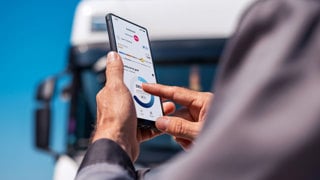The challenges faced by fleet managers in ensuring younger drivers, used to be constantly ‘connected’, remain safe to themselves and other road users was a key topic in debates by two discussion groups at the March 2017 Fleet200 breakfast club meeting.
They tackled the subject of managing drivers, assessing the key elements of driver behaviour, the areas that are most challenging to control, root cause analysis and the role of the vehicle in retention, loyalty and driving the right behaviours.
A summary of the discussion
- Fleets felt that phone and drug usage were the most difficult aspects of driver behaviour to manage.
- Younger drivers were highlighted as a higher risk due to the culture of using smartphones and being constantly ‘connected’.
- It was felt that more should be done by vehicle manufacturers to prevent the use of phones while driving.
- One operator specified that the Bluetooth system was disabled in all vehicles before delivery.
- A zero tolerance approach should be applied, where the driver and whoever calls them while driving are both at risk of disciplinary action.
- Fleets also raised the point that driver behaviour has only become a priority in recent years so getting older drivers on board can also be a challenge.
- In many cases, car drivers have ‘slipped through the net’ with most focus on van and truck drivers.
- Businesses now realise the potential cost savings associated with driver behaviour so there is a big push from management teams to reduce costs through more efficient and safer driving.
- Company car tax is also influencing drivers with some fleets seeing more drivers opting to downgrade to avoid high tax bills. Those who are willing to pay more tax want a new car to their specification and will refuse a reallocated model.
- Petrol powered cars are also making their way back onto choice lists, especially petrol-hybrids.
- Drivers are attracted to hybrids for the lower tax but fleets need to be aware of the higher whole life costs as these vehicles fail to achieve the claimed fuel economy and should only be given to lower mileage drivers who have adequate access to charging facilities.
- For commercial vehicle operators, it is a challenge to ensure their drivers understand the regulations fully, such as the impact under the Working Time Direct if you bolt a trailer on to the vehicle under EU regulations.
- For car choice, from the fleet manager’s point of view, they want the car to be fit for purpose but they also understand that that the type of vehicle an employee gets could influence the decision to take a job role or not so they need to bear that in mind when deciding what cars are on the fleet.
- Increasingly, van drivers want choice in the same way as car drivers although in some cases the driver needs educating that for certain vans the only difference is price and the badge.
- Fleets are considering introducing new vehicle suppliers but they are more based on EV and Hybrid options becoming more relevant.
- Telematics - Accepted in vans/trucks but reluctance from car drivers as they feel this is a privacy/big brother unnecessary addition. If this is to be introduced on a wider scale the driver needs to be educated as to the business and personal benefits.
- From a fleet manager point of view, if they do introduce telematics they need to be prepared to act on the information they receive; if they do nothing, they could be liable if the driver is involved in a serious accident. Based on the information received, they need to offer support to the driver to help them change the things causing issues etc. or discipline accordingly if required.





















Login to comment
Comments
No comments have been made yet.